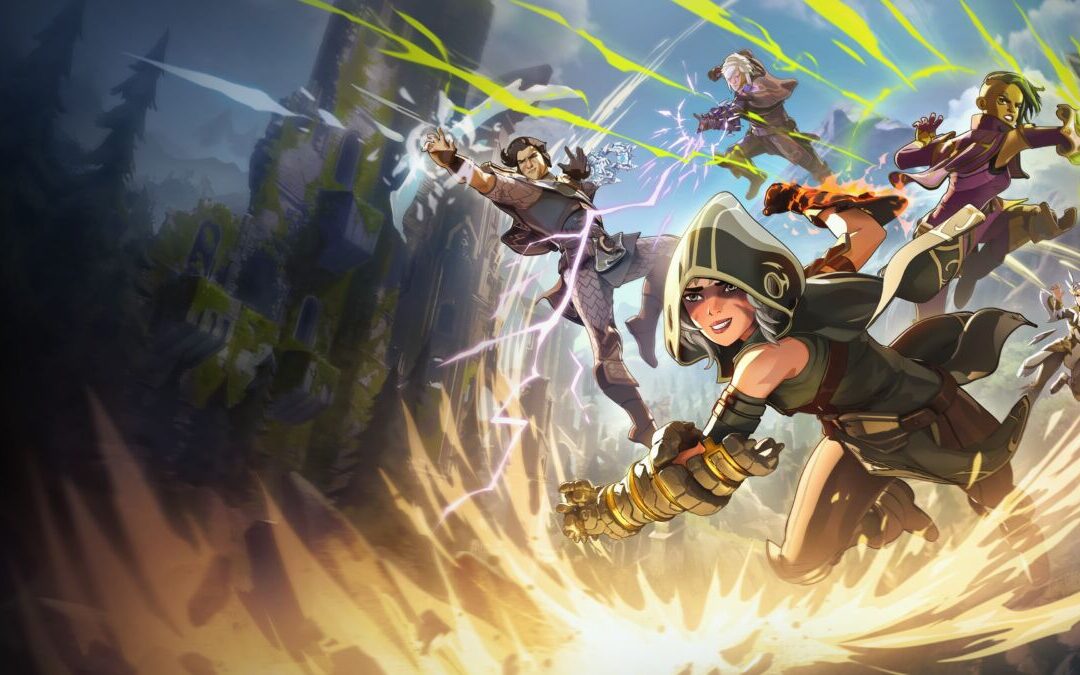
As the battle royale genre evolves into a standard multiplayer format, so too must the games evolve to pull an audience away from the big names like Fortnite and Call of Duty. This has led to a few big indie hits, such as Fall Guys and Escape from Tarkov, taking aspects of battle royales and changing them just enough to create something fresh and unique for their target audience.
Then you have releases like Hyper Scape and Realm Royale that look to amplify the shooting mechanics, but lacking the innovation to hold an audience, generally garnering a bit of attention on release before fizzling into nothingness after a week or so. Unfortunately, Proletariat’s new battle royale, Spellbreak, falls into this second category.
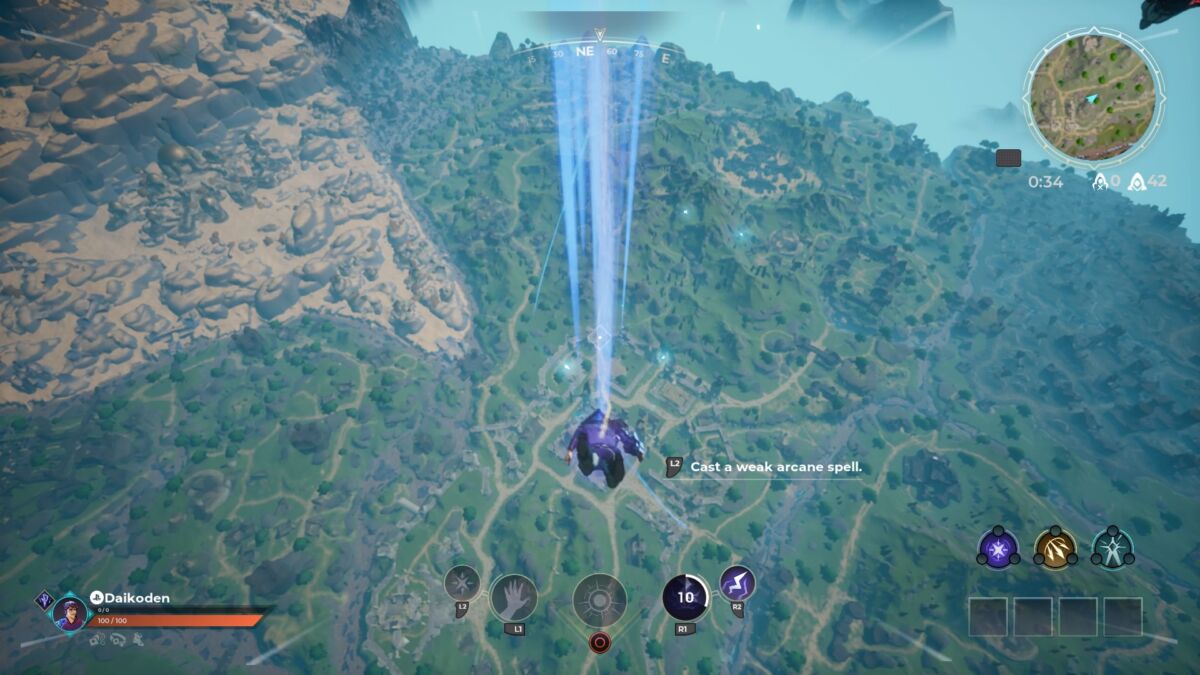
Set in a broken region of a formerly powerful civilization, Spellbreak puts you in control of a battlemage known as a Vowbreaker. These Vowbreakers harvest the magic of powerful gauntlets, channeling the energy into spells and attacks that you then use to crush others in your roguelike quest for loot and levels. The story doesn’t do much except serve as a backdrop for the setting and powers presented in the actual gameplay. It’s serviceable, and that’s all that’s necessary in an exclusively multiplayer battle royale game.
Starting up the game, you’re immediately run through a tutorial to get used to the unique controls and mechanics for succeeding in the Hollow Lands. Each player starts with a basic gauntlet for one of the six elements: Acid (Toxic), Wind, Fire, Earth, Ice, or Lightning. For each gauntlet, you’re given one basic spell, such as shooting a fireball or bolt of lightning, and one arcane ability, perhaps hurling a large boulder or creating a tornado.

Depending on where your spells land, some may combine to create a secondary effect. For instance, hitting that tornado spell with a fireball creates a firestorm that will pull in and subsequently damage anyone around, including yourself. If you run into your own spells, they’ll generally cause damage just like any other player getting hit, which can lead to serious friendly fire in a squad game.
The spell combinations are an interesting mechanic that sounds way cooler in concept than what actually plays out. Combining spells generally leads to one of your spells dealing a bit more damage than normal. That firestorm looks cool but otherwise it just hurts a bit more. Add electricity to your poison cloud and now it shocks and poisons. Add ice to your firewall and now it slows a bit while it burns. You aren’t creating new, more powerful spells as much as you’re just slightly modifying the basic spells to hurt more.
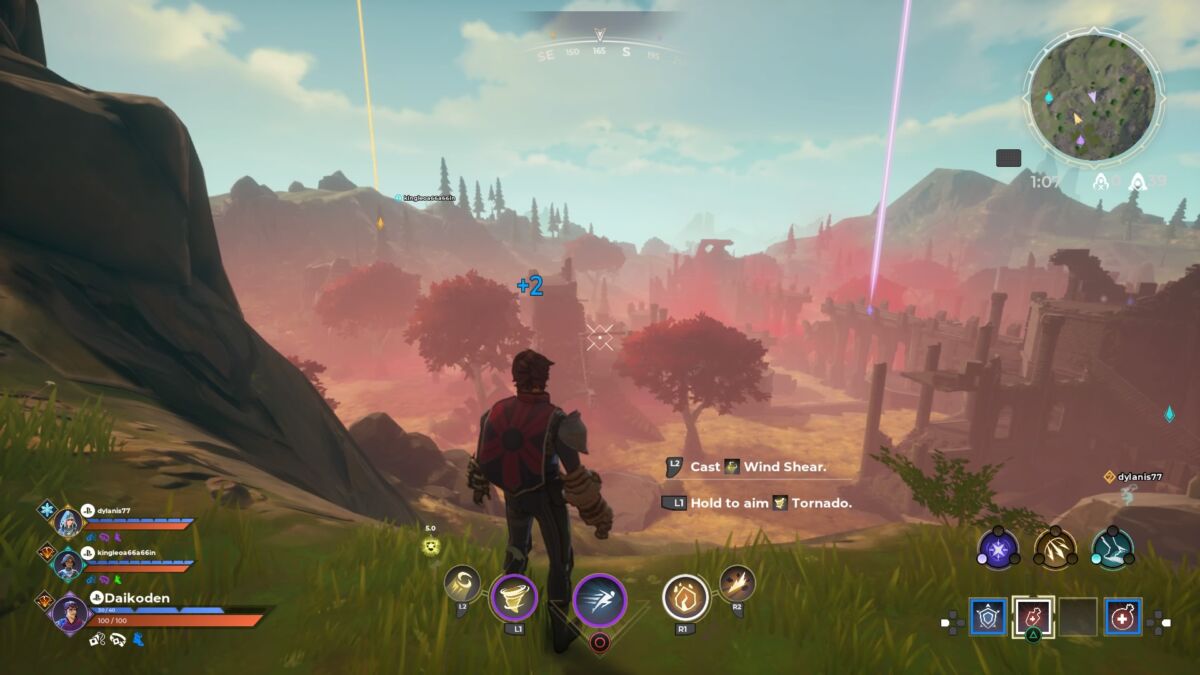
On the bright side, class choice plays a big part in your gameplay strategies, as each of the six elements has a level progression that bolsters your starting glove. If you choose to be a frostborn, your basic ice attack will now leave a trail of ice behind which you can use to skate ahead much quicker than the standard run. Level up, and you’ll be able to hover in the air while aiming your frost shot. Each class’s perks point towards specific tactics, leading to more varied combat depending on class choice.
As a battle royale, the closing storm serves as the standard timer to keep gameplay moving, but it also serves to level up the players as they enter smaller zones. With each smaller zone comes greater power and utility for the combatants, so those last circles can become utter chaos if enough people survive.
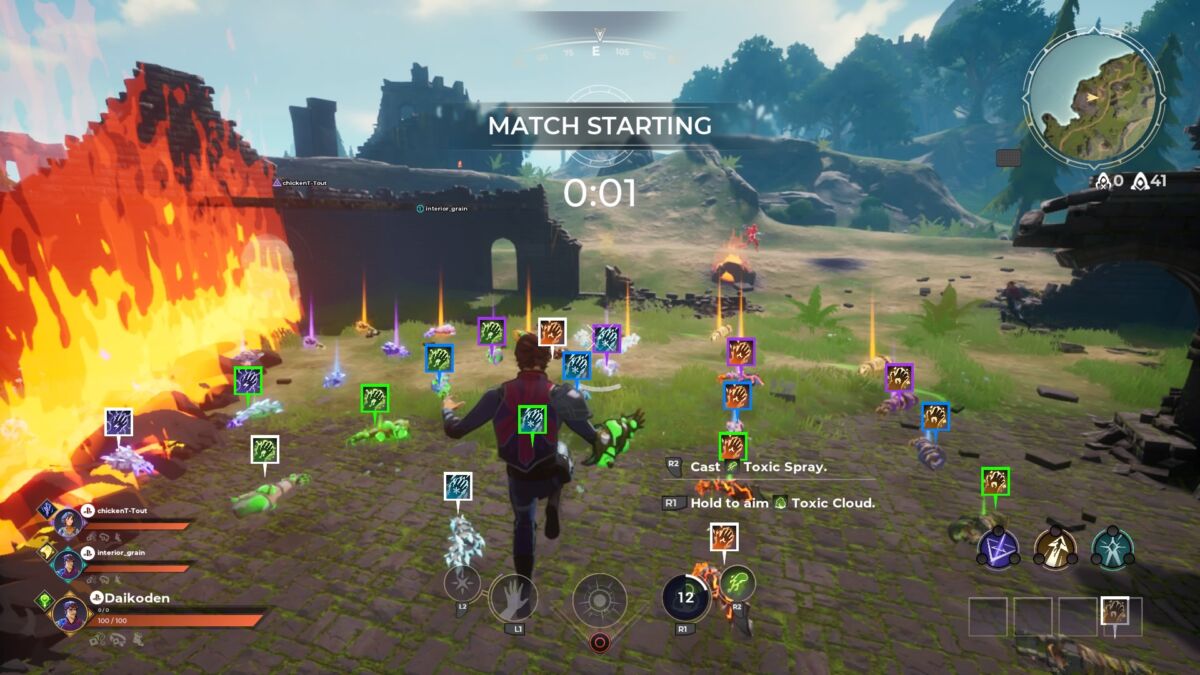
Along with the basic gauntlets, players can also find various runes that give one added ability to help in the fight. Most of these runes serve to add some much-needed mobility, with the notable exception of the Wolf’s Blood Rune, which instead marks nearby players in red so you can locate them easily.
These runes weren’t created equally, though, with most people favoring two or three top choices with the others being mostly ignored. The intended variety of movement quickly devolves to everyone using the flight rune so they can launch around the map every 12 seconds.

Further customization comes in the form of specific perks known as talents. The talents are further broken down into three categories: mind, body, and spirit, with each having its own list of possible choices. These talents are unlocked by levelling up different classes, and they have a wide variety of effects, from allowing you to store gauntlets in your inventory to resurrecting one time upon death.
The talents can add to your gameplay, though there are currently only five choices for each subset. Once I found the set that worked for me, I stuck with the same three runes on each of my classes. I didn’t feel enough of a difference in the classes to warrant a large change in my Talents, though this is an easy place to expand upon in future updates.
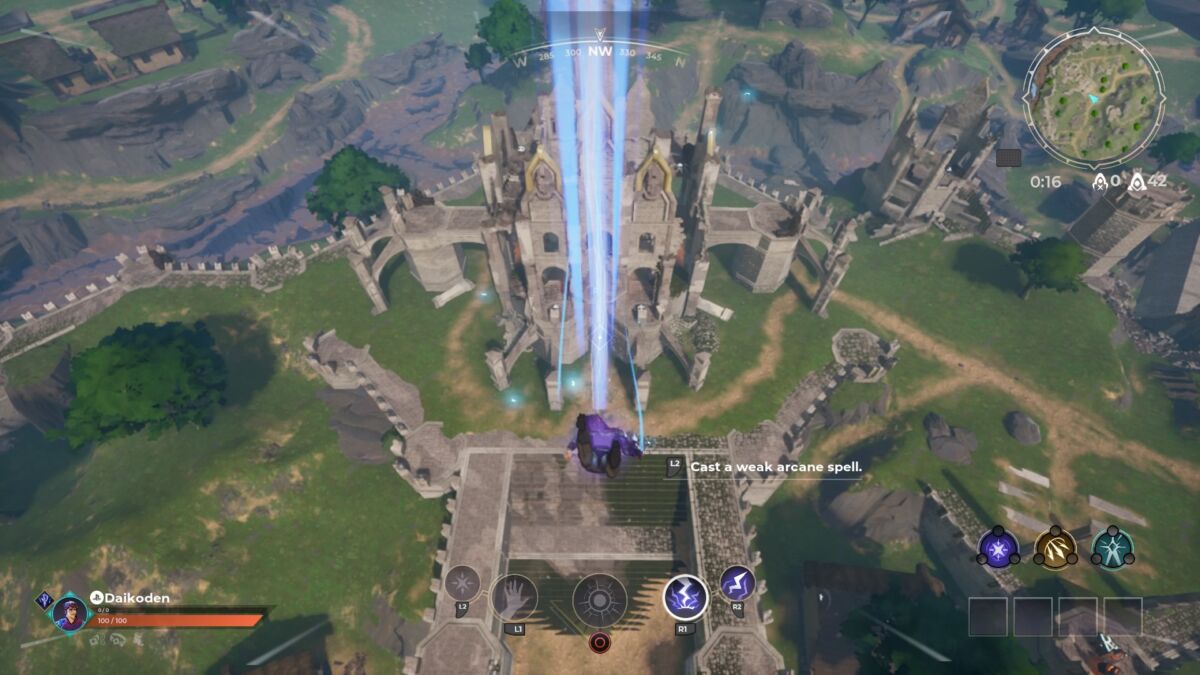
All the spells and movement could build some quality excitement each round if it weren’t for the battleground reinforcing the repetitive aspects of the game. Set in a war-torn medieval territory, environments all run together as just more broken castles. Every drop point or venue is generally some broken castle or wall with loot boxes scattered about.
Any region with a different color on the map still has the broken castles, but now the surrounding grounds are sand. It all runs together, with no area actually standing out as anything other than a run-down castle. With such an elaborate backstory riddled with ancient magic, you’d expect something a bit more exotic, but the setting is all but forgettable here.
As the first week of Spellbreak’s release rolled through, Proletariat slowly released the Solo and Duo queue, with the game only containing Party queue at first. These extra game modes at least helped get rid of the poor communication when playing on a console, as most people lack a mic from my experience.
Playing alone worked best for me, though this also drastically limited the intrigue of combining spells against opponents. Still, it was preferable to a party game where everyone does whatever they feel like, perhaps due to the ping system being limited to a standard ping or an enemy ping.
Add it all up, and Spellbreak is a game with an exciting concept that falls flat in execution. It’s fun for a few rounds to sling spells and fly through the sky, but once the gimmick wears off, you’re left with a mediocre battle royale in dire need of a content update. Here’s hoping that future patches at least add a few extra spells to the relatively short list currently in place.
READ MORE: Battle Royale Is Now Just Team Deathmatch
Some of the coverage you find on Cultured Vultures contains affiliate links, which provide us with small commissions based on purchases made from visiting our site.
